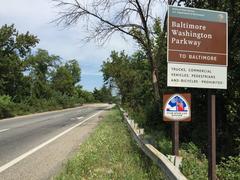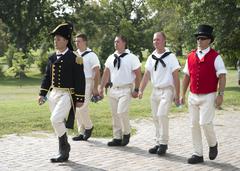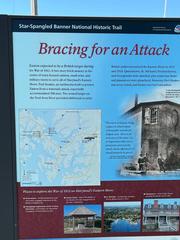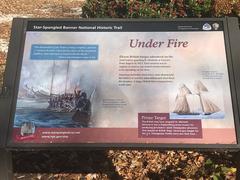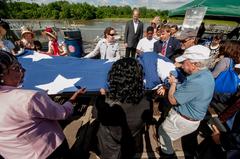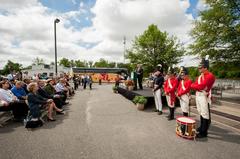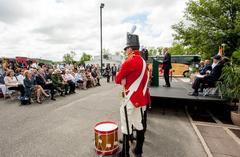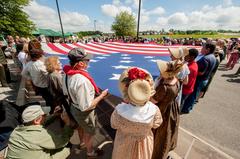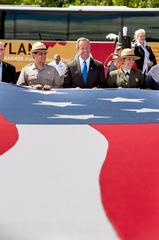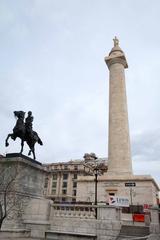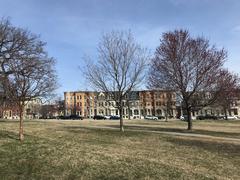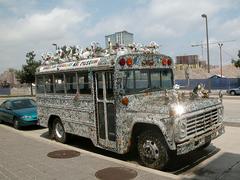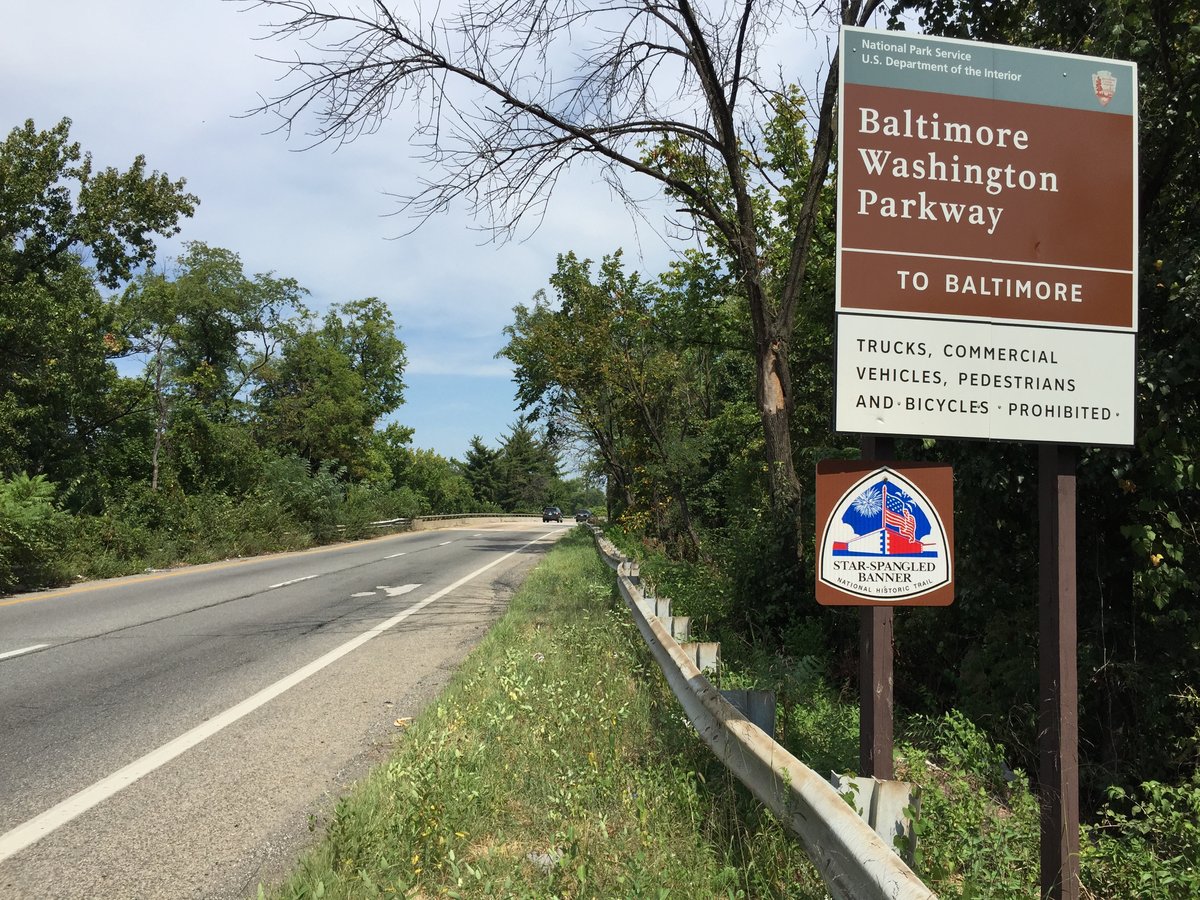
Visiting Guide to Star-Spangled Banner National Historic Trail in Baltimore
Date: 01/08/2024
Introduction
The Star-Spangled Banner National Historic Trail is a captivating gateway to one of America’s most formative periods. Spanning over 560 miles across Maryland, Virginia, and the District of Columbia, this trail invites visitors to immerse themselves in the pivotal events of the War of 1812, particularly the Chesapeake Campaign. Often referred to as “America’s Second War for Independence,” the War of 1812 was a critical juncture in U.S. history, marked by British military raids, blockades, and the eventual defense of Baltimore (NPS). The trail not only commemorates this conflict but also celebrates the resilience and patriotism embodied by the American people during these trying times. Anchored by key sites such as Fort McHenry, where the sight of the American flag inspired Francis Scott Key to pen what would become the national anthem, the trail offers a rich tapestry of historical landmarks, educational exhibits, and recreational opportunities (Smithsonian Magazine). For history enthusiasts, educators, and casual explorers alike, the Star-Spangled Banner National Historic Trail provides a profound and engaging way to explore the roots of American identity.
Table of Contents
- Introduction
- Historical Background
- Visitor Information
- Key Sites Along the Trail
- Special Events and Tours
- Photographic Spots
- FAQ Section
- Conclusion
Historical Background
The War of 1812 and the Chesapeake Campaign
The Star-Spangled Banner National Historic Trail commemorates the Chesapeake Campaign of the War of 1812, a conflict often referred to as “America’s Second War for Independence.” The War of 1812, which lasted from 1812 to 1815, was primarily fought between the United States and the British Empire. The Chesapeake Bay region was a significant theater of war, experiencing numerous British military raids and blockades that severely impacted American shipping and local communities (NPS).
British Raids and the Burning of Washington, D.C.
In the summer of 1814, British forces launched a major offensive in the Chesapeake Bay area. This campaign included the capture and burning of Washington, D.C., where British troops set fire to several key buildings, including the United States Capitol and the White House (then known as the President’s House). This devastating attack was a pivotal moment in the war, demonstrating the vulnerability of the young American nation (Smithsonian Magazine).
The Battle of Baltimore and Fort McHenry
Following the attack on Washington, D.C., British forces turned their attention to Baltimore, a vital port city and a hub for American privateers who had been harassing British shipping. The Battle of Baltimore, which took place from September 12 to 15, 1814, was a critical engagement in the Chesapeake Campaign. The British aimed to capture the city by attacking Fort McHenry, which guarded Baltimore’s harbor.
The bombardment of Fort McHenry began on the evening of September 13, 1814, and continued for 25 hours. Despite the relentless shelling, the fort’s defenders, led by Major George Armistead, successfully repelled the British assault. The sight of the American flag, known as the Star-Spangled Banner, flying over the fort the next morning inspired Francis Scott Key to write the poem that would later become the United States’ national anthem (NPS).
The Creation of the Star-Spangled Banner
Francis Scott Key, an American lawyer, witnessed the bombardment of Fort McHenry from a ship in the Patapsco River. Key was there to negotiate the release of an American prisoner held by the British. Detained on a British ship during the attack, Key anxiously watched the battle unfold. When he saw the American flag still flying over the fort the next morning, he was moved to write a poem titled “Defence of Fort M’Henry.” This poem was later set to the tune of a popular British song and renamed “The Star-Spangled Banner,” becoming the national anthem of the United States in 1931 (NPS History).
Establishment of the Star-Spangled Banner National Historic Trail
The Star-Spangled Banner National Historic Trail was authorized by the Consolidated Natural Resources Act of 2008. This 560-mile trail traces the routes taken by American and British troops during the Chesapeake Campaign, connecting historic sites in Maryland, Virginia, and the District of Columbia. The trail includes both land and water routes, allowing visitors to explore the region’s history through various means, including hiking, biking, boating, and geocaching (NPS).
Visitor Information
Visiting Hours and Ticket Information
Most sites along the Star-Spangled Banner National Historic Trail are open year-round, but hours of operation and ticket prices vary. It is advisable to check individual sites for specific visiting hours and ticket information. For example, Fort McHenry National Monument and Historic Shrine operates daily from 9 AM to 5 PM and charges an entrance fee of $15 per person (NPS).
Travel Tips
- Plan Ahead: Research the sites you plan to visit and check for any seasonal closures or special events.
- Comfortable Footwear: Many sites involve walking or hiking, so wear comfortable shoes.
- Weather Preparedness: Check the weather forecast and dress appropriately.
- Guided Tours: Consider taking a guided tour for a more in-depth understanding of the historical significance.
- Photography: Don’t forget your camera to capture the scenic views and historical landmarks.
Key Sites Along the Trail
Fort McHenry National Monument and Historic Shrine
The premier visitor and orientation center for the trail, Fort McHenry is where the famous battle took place. Visitors can explore educational exhibits, participate in ranger-led programs, and view the iconic flag that inspired the national anthem (Visit Maryland).
Jefferson Patterson Park and Museum
Located on the site of the Battle of St. Leonard’s Creek, the largest naval engagement in Maryland’s history, this park offers historical exhibitions, re-enactments, and archaeological programs (Visit Maryland).
Havre de Grace
This waterfront town was nearly destroyed by a British raid but was saved by its brave inhabitants. Historic buildings from that period still stand, and visitors can tour the Susquehanna Museum at the Lock House and the Concord Point Lighthouse (Visit Maryland).
Battle Acre Park
This park commemorates the Battle of North Point, where American forces, including two teenage heroes known as the “Boy Martyrs of Baltimore,” resisted the British advance on Baltimore (Visit Maryland).
Special Events and Tours
Throughout the year, various sites along the trail host special events and guided tours. Check the NPS events calendar for up-to-date information on reenactments, educational programs, and other special events.
Photographic Spots
For those interested in photography, the trail offers numerous picturesque locations. Some of the best spots include:
- Fort McHenry: Capture the iconic flag and the historic fort.
- Havre de Grace: The waterfront views and historic buildings provide excellent photo opportunities.
- Jefferson Patterson Park: Scenic landscapes and historical reenactments make for compelling photos.
FAQ Section
What are the visiting hours for Fort McHenry?
Fort McHenry is open daily from 9 AM to 5 PM.
Do I need to buy tickets in advance?
Tickets can be purchased on-site, but it’s advisable to check individual sites for any specific requirements or recommendations.
Are there guided tours available?
Yes, many sites offer guided tours. Check the specific site for availability and scheduling.
Conclusion
The Star-Spangled Banner National Historic Trail stands as a poignant tribute to the events and individuals that shaped the United States during the War of 1812. Through its extensive network of sites and activities, the trail offers visitors a unique opportunity to delve into the history of the Chesapeake Campaign, the defense of Baltimore, and the creation of the national anthem. By visiting the trail, individuals can gain a deeper appreciation of America’s resilience and the enduring spirit of patriotism that continues to define the nation. Engaging with this historical journey not only honors the past but also fosters a greater understanding of the nation’s heritage and the values that continue to shape its future (NPS History).
References
- National Park Service. (n.d.). Star-Spangled Banner National Historic Trail. Retrieved from https://www.nps.gov/places/star-spangled-banner.htm
- Smithsonian Magazine. (n.d.). The Real Story Behind the Star-Spangled Banner. Retrieved from https://www.smithsonianmag.com/history/real-story-behind-star-spangled-banner-flag-inspired-national-anthem-149220970/
- National Park Service. (n.d.). Fort McHenry National Monument and Historic Shrine. Retrieved from https://www.nps.gov/fomc/index.htm
- Dumbarton House. (n.d.). Star-Spangled Banner National Historic Trail. Retrieved from https://dumbartonhouse.org/about/star-spangled-banner-national-historic-trail/
- Chesapeake Bay Maritime Museum. (n.d.). Retrieved from https://cbmm.org/
- Visit Maryland. (n.d.). Star-Spangled Banner Trail Sites to Visit. Retrieved from https://www.visitmaryland.org/list/star-spangled-banner-trail-sites-visit
- National Park Service History. (n.d.). Retrieved from http://www.npshistory.com/publications/stsp/index.htm
